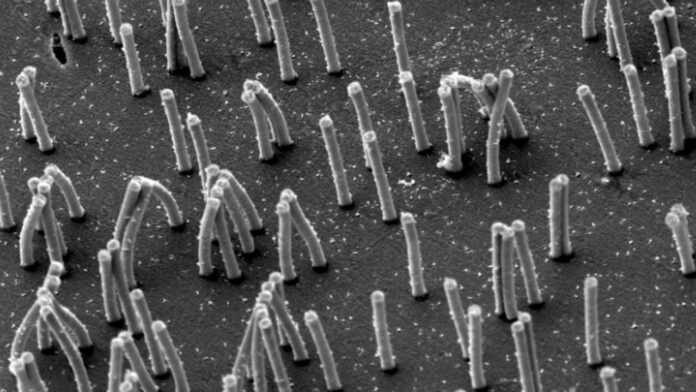Miniature hairs that are used throughout the human body for various functions can be artificially recreated by TU/e scientists. That is a breakthrough.
These tiny hairs are called cilia. They line the walls of our airways and transport mucus out of our lungs. In the kidneys, cilia function as a kind of sensor.
“Cilia have quite amazing capabilities, and this has inspired scientists to develop artificial counterparts for use in medical sensors based on microfluidics, or even to run microrobots”, researcher Jaap den Toonder, professor at the Faculty of Mechanical Engineering at TU/e, says.
But while there are a thousand potential applications for cilia, until recently it was impossible to reproduce them. This is mainly due to the hair’s minuscule size. “Artificial cilia can be a hundred times larger than biological cilia, so they cannot be used in small-scale applications”, Den Toonder says.
Artificial lungs
The creation of the hairs, which are about 6 micrometers long and have a diameter of about 200 nanometers, has now been successful. The breakthrough is important to learn more about how real cilia work. “For example, we plan to make an artificial lung and study how our magnetic cilia transport mucus from the lungs, and how we can influence the process with biochemical agents”, researcher Tanveer ul Islam says.
In the research, TU/e cooperated with the Technical University of Lausanne in Switzerland.
Source: www.studio040.nl
Translated by: Bob
















